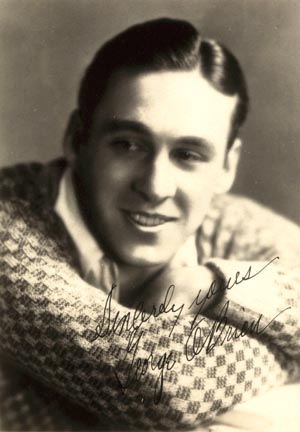In
a 1966 interview John Ford was asked what happened when talkies
came to Hollywood. “Nothing,” Ford said, “we just made them with
sound.”
That might seem like typical Ford bluster but on the evidence of his first three sound features for Fox — Born Reckless, Up the River and Seas Beneath, all included on the new Ford At Fox DVD box set (and all
from 1930!) — it seems like a fair assessment of his own remarkably
assured transition into the sound era. (Ford had made one sound
short and one silent feature, The Black Watch, which was released with interpolated talking sequences, before the three sound features from 1930.)
The first two of the three are admittedly clumsy programmers.
Ford moves his camera occasionally in these films but they also have a
number of scenes that feel stagebound, with proscenium
framing and little dynamic choreography within the shots. Often
these scenes were staged and directed, at Fox's insistence, by “dialogue experts” with stage experience.
The results could be truly dreadful — especially so for a film like Born Reckless,
which was meant to be a gritty underworld drama. To hear actors
portraying hoods declaiming street slang in theatrical tones, with
slight pauses between lines to avoid overlaps, is laughable today, and
was probably laughable to a lot of people when the film first came
out. Interestingly there is one scene in a bar, undoubtedly
directed by Ford himself in an experimental mood, which features fast
overlapping dialogue by a number of characters. It's impossible
to make out much of what's said but the film suddenly feels modern for
a few moments.
Up the River, a whimsical
prison comedy, had better lead actors — Spencer Tracy and Humphrey
Bogart no less — and so feels a bit more naturalistic, but it's a
routine film, with Ford often straining too hard for his comic effects,
as he had a habit of doing throughout his career. The inspired
visual touches are few and far between. It doesn't help that Up the River
as presented in this set derives from a severely damaged print, with
missing frames (and thus dropped bits of the soundtrack) which make the
dialogue in several places impossible to follow. Apparently this
print represents the best surviving material for the film.
Then suddenly we have Seas Beneath.
The story material is potboiler stuff — recounting the adventures of
some plucky U. S. sailors in WWI venturing forth on a decoy ship to
hunt German submarines. But visually the film is breathtaking,
with scenes shot at sea that have to be seen to be believed. Even
the built sets, for the episode when the sailors go on shore leave in
the Canary Islands, have solidity and depth and often look out onto
exterior sets alive with action.

The delivery of dialogue is occasionally stilted, but you can see that
Ford was going for something resembling natural speech. He's
greatly aided by George O'Brien (above) in the lead role, whose lack of stage
experience is a decided advantage to him here.
The film has some remarkable action sequences and many beautiful,
powerful images, reminiscent of silent-era filmmaking. Ford
doesn't seem to be straining against any limitations imposed by the
microphone — he seems perfectly at home in what amounted to a new
medium. The visual bravura lifts the film above its pedestrian
story and script, as it so often did in the silent era. One can
easily imagine it as a silent film. Ford just made it with sound.
